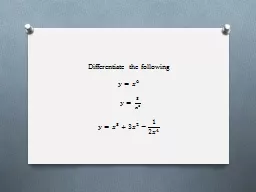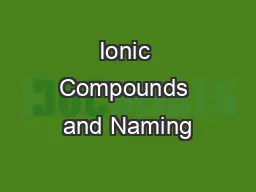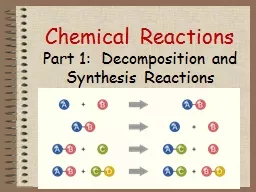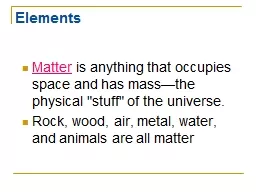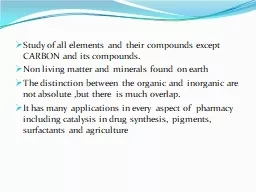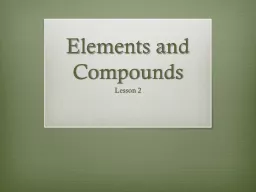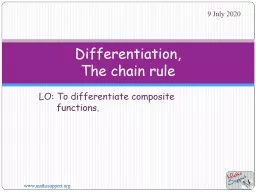PPT-differentiate between elements and compounds on the most basic level.[6.5C]
Author : min-jolicoeur | Published Date : 2018-11-25
October 2014 Secondary Science 7th Grade calculate density to identify an unknown substance66B October 2014 Secondary Science 7th Grade compare and contrast potential
Presentation Embed Code
Download Presentation
Download Presentation The PPT/PDF document "differentiate between elements and compo..." is the property of its rightful owner. Permission is granted to download and print the materials on this website for personal, non-commercial use only, and to display it on your personal computer provided you do not modify the materials and that you retain all copyright notices contained in the materials. By downloading content from our website, you accept the terms of this agreement.
differentiate between elements and compounds on the most basic level.[6.5C]: Transcript
Download Rules Of Document
"differentiate between elements and compounds on the most basic level.[6.5C]"The content belongs to its owner. You may download and print it for personal use, without modification, and keep all copyright notices. By downloading, you agree to these terms.
Related Documents

![PPT-differentiate between elements and compounds on the most basic level.[6.5C]](https://thumbs.docslides.com/733709/differentiate-between-elements-and-compounds-on-the-most-basic-level-6-5c.jpg)
